As photographers, we heavily rely on memory cards, because they store images captured by our cameras and we use them to transfer images to our computers / main storage. In some cases, photographers even rely on memory cards to be their secondary or tertiary backups when shooting in the field. The role of memory cards in a photography workflow should not be underestimated – a failed card may not only lead to many problems and frustrations, but can also create bigger problems, especially when dealing with commercial clients who could make the photographer liable for loss of their images. In this article, I will share some tips on how to properly use memory cards and how to take care of them based on my many years of experience, both as a photographer and as an IT professional.
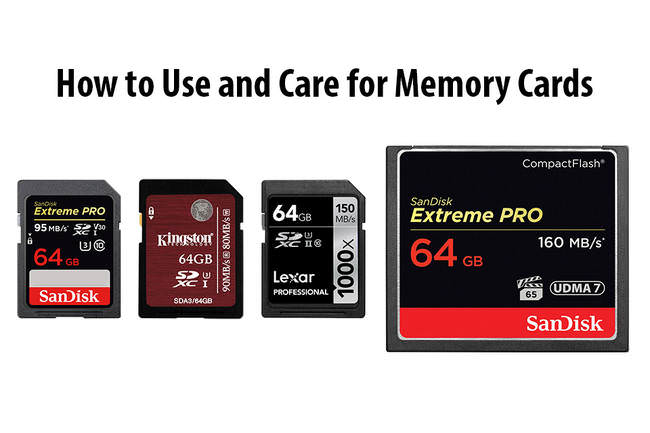
In my opinion, nothing is worse than telling a newlywed couple that their entire wedding was lost due to a bad memory card. While a commercial photo shoot can be re-shot, even at a great cost, it is nearly impossible to re-shoot a whole wedding. Therefore, it is important to understand that a memory card is not just a simple storage accessory; its role as a reliable storage media tool should never be overlooked. Unfortunately, there is too much conflicting information on the Internet in regards to how one should use and treat memory cards, with very little evidence, which sadly leads to misunderstanding and misuse of memory cards in the field. So aside from standard recommendations, I will also go through such topics and explore them in detail, which will hopefully clear out some of the confusion.
1) Buy Reliable Brand Memory Cards
With so many different memory card brands out there at varying pricing levels, it might be tempting to go for a much cheaper, no-name brand card. However, before you make your purchasing decision, you should seriously decide if you are willing to deal with potential failures and problems of such cards in the future. Also, factor in the cost of replacement – if you buy a no-name brand card and it fails, you will most likely be stepping up to get a much higher quality branded card, so your initial investment becomes a waste. If you start out with a good brand card and anything happens to it, you can count on the manufacturer’s warranty to get you a working replacement. Lastly, don’t forget to value your time as well! If a card fails, you might spend many hours trying to recover the content. Considering how cheap high quality memory cards have gotten nowadays, why even take the risk of choosing a no-name brand? Why not go with a good, reliable brand to begin with?
When it comes to memory card brands you can trust, I personally consider cards from SanDisk, Lexar, Samsung, Sony, Transcend, Kingston and PNY to be often quite good in quality. Over the years, I have used memory cards from all of these brands and found them to work quite well in cameras, with fairly solid performance and reliability. Although there is no statistical data on failure rates of different memory card brands, my personal bias has always been with SanDisk – although it is probably one of the most expensive brands out there, I have never seen a SanDisk memory card fail on me. I mostly own SanDisk Extreme Pro series CF and SD cards and they have always been the cards I pick for important photo shoots. Lexar CF cards have been pretty reliable, but I stay away from their SD cards. They gave me a lot of headaches – pins broke off on practically every memory card I used and when I sent the cards for replacement, I got refurbished cards that were heavily used before. Since then, I have been buying SD cards from different manufacturers when they would go on sale to probe them out. After testing out the higher-end Samsung Pro+ SD cards, I realized that they are also excellent cards that rival the SanDisk Extreme Pro series cards in terms of performance and reliability, so they became my second most favorite brand for SD cards. Sony has been a mixed bag – I bought a bunch of Sony pro-grade SD cards that can do 94 MB/s speeds and although they were very cheap, their reliability has been pretty bad: two cards out of eight have failed within a year of use. If I need cheap memory cards for different needs like backup, I might also look at brands like Transcend, Kingston and PNY, which often sell for great prices, especially during holidays when inventories need to be cleared up. This is obviously my personal experience with these brands and cards – your mileage might certainly vary and you might find one brand to be more reliable than another based on cards that have failed you in the past. It is also worth pointing out that memory card specifications and features change every year, so if you have experienced a problem with one particular model, it does not mean that the next model will be as bad. Based on my research and my past experiences, failure rates among different memory card manufacturers vary greatly and it is impossible to say that one brand will always be better than another. There are too many brands, too many models, too many features and too many memory card sizes out there to make meaningful statistical data that could compare different memory card brands for reliability. For me, brands like SanDisk and Samsung are trustworthy, because these two companies have been known to make their own memory chips and their quality control is excellent. Every computer I build has a Samsung SSD or PCIe NVME storage, so my trust in Samsung goes beyond memory cards. In comparison, many other brands simply slap their stickers on OEM memory cards…
So if you want to have less headaches in the future, make sure to buy memory card brands you can trust!
2) Buy Memory Cards From Authorized Sellers
Once you know which brand of memory cards you want to buy, make sure to buy those memory cards from authorized sellers. This one is even more important than #1, because there are too many fake memory cards out there! Remember, all SD cards more or less look the same, so if someone slaps on a SanDisk label on an OEM card, you would have no idea that you are dealing with a fake memory card. Some Chinese manufacturers find ways to not only fake the memory cards themselves, but also closely imitate the original retail packaging, making the card look pretty authentic. So if you found a card that you like at B&H Photo Video or Adorama but the price looks a bit too steep for your liking, don’t fool yourself if you find something much cheaper on eBay. Companies like SanDisk dictate their pricing with retailers, so if their pricing changes at one retailer, it should be mirrored with another (unless the sale is a one-off exclusive, such as the Deal of the Day at Amazon). If you shop for memory cards at Amazon, make sure that the card is sold and shipped by Amazon – there have been reported cases of fake memory cards being sold by third party sellers there.
3) Do not Buy Used or Refurbished Memory Cards
Even if you find a good deal on used or refurbished memory cards, I would highly discourage you from buying those. The problem with used and refurbished memory cards, is that you don’t know how frequently those cards were used before you. If the photographer used those cards heavily, it means that the memory card cells have less life left in them, so you might start encountering issues with those cards sooner than you would expect, especially if you are a busy photographer. Unlike most cameras that can show you total number of actuations, memory cards do not keep a track of how many times write operations took place. So if someone tells you that their card was “barely used”, there is no way for you to check if the seller is telling you the truth. In addition, you don’t know how well the photographer took care of those cards and if there is any warranty left on the cards, you most likely will not be able to transfer the warranty under your name. Memory cards are incredibly cheap nowadays, so I would not try to save a buck or two by attempting to get used ones.
4) Pay Attention to Memory Card Specifications
Sadly, for most memory card manufacturers, it is all about the labels and the numbers they can slap on their memory cards to boost their sales, which means that you should not expect real, honest information on those labels. If a memory card says that it can do 95 MB per second speeds, it does not mean that the memory card is actually going to be able to get to those speeds. In fact, did you know that the published transfer numbers on memory cards often only reflect the read speed, but not the write speed? So if you see something like 95 MB/sec transfer rate on a memory card, that only shows the potential speed of the transfer from your memory card to your computer. The word “potential” is key here, because those advertised speeds are the maximum theoretical speeds a memory card can reach when doing sequential writes of large files.
Over the years, I found that most memory cards cannot reach their maximum advertised speeds, which is disappointing. So if you buy a memory card that claims fast read and write transfer rates, try to copy large-size files to and from the memory card to see if those numbers reflect the reality. But do make sure that you have a fast enough reader that can actually take advantage of those speeds (see #6 below for more information). I have tried to test out my SanDisk Extreme Pro cards that claim to have up to 95 MB/sec read and 90 MB/sec write rates and I have never been able to reach those speeds. At most I was able to get to was around 85 MB/sec read and 73 MB/sec write speed on those cards and they were the best of the bunch – others were even worse in comparison.
So when you are evaluating a memory card for purchase, don’t just look at the label – pay close attention to detailed specifications that show not just the maximum read speed, but also tje maximum write speed. Then once you receive the card, make sure to test it out. If transfer speeds are incredibly slow, you might be dealing with a fake memory card.
5) Don’t Buy Large Capacity Memory Cards
Another tip for memory cards is not to buy the super large capacity ones. If you average a few hundred shots on your memory card, that’s good enough – you don’t need a memory card that can accommodate thousands of pictures (exception would be wildlife photographers, who shoot a lot of frames). Why? Because if that super large capacity memory card fails, you will lose everything on it. This is especially important for those who shoot critical projects and events. If you have a trip of your lifetime, it might sound appealing to just use one single memory card and not worry about changing memory cards. But if anything happens to that memory card and you don’t have backups, then you will lose all the pictures from that trip. Unless you have a very solid backup workflow, where you make sure to back up images after each shoot, you should not stash on those large capacity memory cards.
Now if you have an advanced camera that has multiple memory card slots, having a single large capacity memory card could be useful. Many photographers use the second memory card slot as a “backup” and use a large capacity memory card in that slot without taking it out – they just replace the first memory card as needed. John Bosley does this for his wedding work and he is yet to lose files from important photo shoots and weddings he is involved in. If you follow a similar practice, large capacity memory cards are not necessarily evil. Just don’t save all the precious work in one memory card, without any backups!
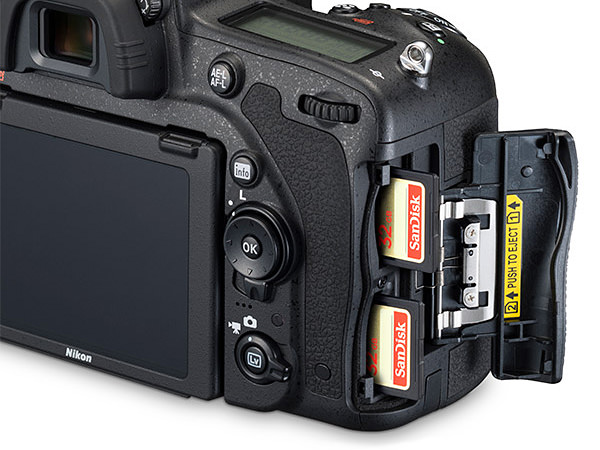
Also, if you do shoot with multiple memory card slots in overflow mode (one memory card fills up and the camera starts recording to the second one), try not to delete images using your camera! When shooting in overflow mode and deleting images, you never know which particular memory card contains which photos. The camera will automatically place images in the first card that has the available space. This was a hard lesson learned for me, since I was stupid enough to delete pictures from the main memory card and I kept on shooting the best pictures to it without any backups. I then managed to lose that memory card when traveling, which contained the most valuable pictures from the trip! I wrote about my experience in this article back in 2011 and even promised a reward if someone found my card and handed it back to me, which sadly never happened.
How big should the capacity of memory cards be? Well, it all depends on the size of individual files your camera creates. If you shoot 14-bit uncompressed RAW, your files are going to take a lot of space and you might need a bigger card to accommodate a few hundred of those images. If you shoot losslessly compressed RAW with a low to medium resolution camera, you might get away with smaller cards. When shooting with my Nikon D750 and D810 cameras, I often shoot with 32 GB cards. But when doing video work, shooting with a higher resolution camera or shooting a lot of panoramas, I might use a 64 GB card. I only own a single 128 GB card, which I bought primarily for shooting wildlife and for keeping it as a backup.
Keep in mind that requirements for memory cards will change overtime. With the increase of resolution and bit depth in cameras, you might need to start moving up to larger capacity memory cards in the future.
6) Get a Fast and Reliable Memory Card Reader
While it is a myth that you must only buy memory card readers from reputable brands like SanDisk and Lexar, chances of having a more reliable card reader from a better brand are higher simply because of better quality control. Over the years, I have used many different memory card readers from Lexar, SanDisk and other third party manufacturers. I have never managed to damage a memory card because of a bad memory card reader, but there is always a potential to damage a card, especially during write operations. If a memory card reader fails at the time of writing, the chance of killing a card completely is pretty high. So as long as the memory card reader is not a really bad knock-off, it should do just fine. Most SD card readers built into laptops have the same OEM chips you will find on many other standalone memory card readers. So for the most part, the underlying technology is the same in most memory card readers. I personally prefer Lexar card readers over SanDisk ones, because I found them to be reliable and fast. SanDisk just has not paid much attention to its card readers – they are often inferior compared to Lexar ones in terms of technology and features.
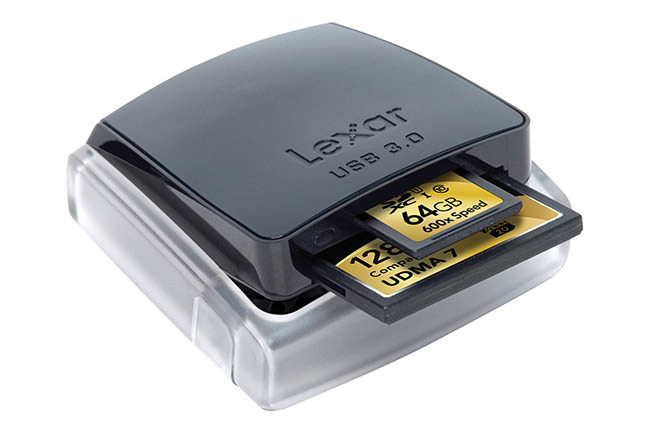
My favorite is the Lexar Professional Workflow, which in my opinion is the best card reader on the market thanks to its versatility – I can use the unit to transfer multiple memory cards at the same time and I could even add SSD storage to the unit for backups. If you don’t need such a setup, the much simpler and smaller Lexar Professional USB 3.0 Dual-Slot Reader is also superb and works out very well for both laptop and desktop use. I usually take the latter when I travel with my Surface Pro, since it does not have an SD card reader. But if your laptop already has an SD card reader, then you don’t need to get an external unit, unless your memory card reader is very old and it cannot support fast transfer speeds of the latest memory cards.
7) Formatting Memory Cards
When using memory cards, it is always a good practice to format those memory cards in your camera, and preferably, the camera brand you are going to be shooting with. While it is not necessary to format memory cards in cameras and you could go through the same process on your computer, I find it simpler and faster to do it in my camera. When shooting with my Nikon DSLRs, all it takes to format a memory card is holding two buttons with red labels on the camera, then confirming the process by pressing those two buttons again. I could format all cards from my memory card holder in a minute or two, which is very convenient. The other reason why you might want to format memory cards in your camera, is because some camera brands like Sony create a small database / index of files on memory cards after formatting them, so if your memory card does not contain those files, the camera will complain that the database does not exist and it will attempt to create the file structure and the database before the memory card can be used. Instead of going through these hassles, I find it better to just format all the memory cards you have in the same camera you are planning to shoot with. This way, you just pop a new memory card in and you are ready to keep on shooting.
If you decide to format memory cards in your computer, make sure that you check the “Quick Format” option as seen below:
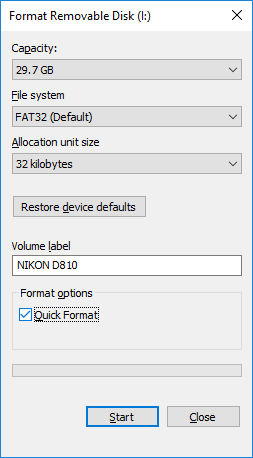
You do not want your computer to do a low-level format of your memory cards. In fact, performing a low-level format, where the computer will go through each memory block on your card and fill it with zeros is bad for the overall health of your memory card, especially if you do it often, since those are write operations and each memory cell on your memory card only has so many writes to it before it becomes unusable. Plus, low-level formatting takes forever to complete, and if you ever want to retrieve files in case of accidental formatting, you will never be able to do so. When formatting memory cards in your camera or performing a Quick Format on your computer, the formatting process simply re-creates the index table that stores where files are physically located on the memory card, so existing files are simply written over when a write operation takes place. You don’t see those files on your camera or your computer, but they are still there. That’s why it is possible to restore images from a memory card, even if the card is formatted. It is important to note that memory cards under 32 GB are typically formatted with FAT32 file system as seen above, whereas cards with larger capacities will be formatted with exFAT file system, due to capacity and file size limitations. Keep this in mind when manually formatting cards on your computer.
Some people choose to move contents of memory cards instead of formatting them. That’s a perfectly fine practice and there is nothing wrong with doing that, but I personally stay away from delete and move operations on my memory cards. Reading contents of a memory card is always going to be faster than read + delete. Also, I do have a practice of not using the same memory cards when shooting in the field. If anything happens to my computer when traveling, I still want to be able to have all of my images safe in another location – see my notes under #13 below on best practices for field use of memory cards and their potential value as secondary / tertiary backup.
8) Keep Camera Batteries Charged!
Keeping your camera batteries charged is obviously a no-brainer. However, some of us are guilty of pushing cameras to their limits until batteries fully die. I never thought that a dead battery could cause a memory card card to fail completely until last year. John and I were recording our Level 1 Post-Processing and Workflow Course in the studio and I did not pay attention to the battery level on the primary camera. The battery died while recording and after I popped a new battery in, I saw the dreaded “ERR” message. I knew something was going on with the memory card, so I took it out of the camera, put it on my computer and it was not recognized. The failed write operation completely killed the memory card to the level that I could not even format it anymore! Needless to say, we had to reshoot the whole section the next day because of this and it was not a pleasant experience. Ever since, we have been paying close attention to the battery level – the moment the camera flashes with a red battery sign in live view, we have been swapping the batteries out. Better safe than sorry!
9) Safely Eject Memory Cards – Don’t Just Unplug Them
Another obvious mistake to avoid is unplugging a memory card while any read or write operations are taking place. While a read operation might do no damage to the card, an interrupted write operation often causes memory card corruption, as it happened in the above-mentioned situation. The same goes for interrupting write operations while your camera is taking a picture. If you want to stop a long exposure, don’t just remove the memory card or worse, your camera battery! Powering off your camera should stop the long exposure and safely complete write operations, which is what you want. If something happens to your camera and it seems to be stuck, you always want to wait for the memory card light to turn off before deciding to do anything drastic, like removing camera batteries. There have been cases with some cameras being incompatible with particular memory cards and write operations would take excessively long as a result. Some photographers were not patient enough to wait for the light to turn off and they would take the battery out, which often resulted in memory card corruption. If you take a picture and it takes over 5 seconds for the memory light to go off, you might want to stop using that memory card and replace it with a different one.
The same goes for unplugging memory cards from computers – you never want to just remove a card while data is being read from or written to the memory card (again, write operations are particularly evil). The best practice is to safely eject the memory card via your operating system before removing it, which can be easily done in both Windows and Mac operating systems.
10) Avoid Static Charges
If you are in a very dry environment and you wear clothes that gather a lot of static, you might want to avoid touching memory cards. While the exterior shell of CF and SD cards is made out of plastic, the pins that connect to devices are made from copper and other materials that conduct electricity. And since electrical components can easily get fried with a static charge, you want to avoid touching them. If I know that I might be carrying a static charge, I usually find a piece of metal, such as a doorknob, that I can use to discharge the built-up static before touching any electrical devices, including cameras and memory cards.
11) If a Memory Card Fails, Stop Shooting
Memory card failures are pretty random. Some failures are temporary, with your camera reporting an error but then allowing you to continue shooting, while other errors are permanent – when there is more serious damage to the memory card. If you ever see an error on your camera while shooting to a particular memory card, stop shooting! The last thing you want is make matters worse by adding more images to the card and potentially corrupting the card even more. The moment you see an error, replace the memory card with another one. If the error persists, it might not be related to the memory card. But if the error disappears, your card might be failing.
The best course of action in such situations is to insert your memory card into a memory card reader as soon as possible and try to copy all the files. If the files are not corrupted and you are able to successfully copy all the files, you need to know whether it was a temporary failure on your camera, or the start of a memory card failure. Once the transfer is done, perform a low-level format of the memory card on your computer. If formatting fails or you see errors during the process, it is time to either send the memory card to the manufacturer for a replacement, or if you are outside the warranty period, it is time to trash it. If the low-level format completes and you see no errors, then you should be safe to use it again – just monitor the card and if you ever see another error, it might be safer to get rid of it than to continue using it.
If you cannot retrieve files from a failed memory card, chances of being able to get those files back are very slim. You can try using recovery software to get the files back, but recovery typically only works on deleted files and formatted cards, not on failed cards. If the data on the memory card is extremely important, you might want to reach out to your local data recovery company and ask if they can help. Keep in mind that such companies often charge a lot of money to restore your data!
12) Keep Memory Cards Protected From Direct Sun and Moisture
If you want to prolong the life of your memory cards, always protect them from extreme weather conditions. Never leave out memory cards under direct sun – keep in mind that memory card shells are made out of plastic and plastic can easily melt when exposed to the sun. In addition, by leaving memory cards under direct sun, you might damage electrical components of the cards, which might cause them to fail. Another enemy of electronics is moisture and water containing minerals. While pure H2O is not harmful in any way, saltwater and drinking water with minerals can cause an electrical short, which will certainly cause the device to fail. If you accidentally drop a memory card in water, always make sure to fully dry it out before attempting to read data from it. Make sure that the SD card is not just dry on the outside, but also fully dry inside the plastic cover.
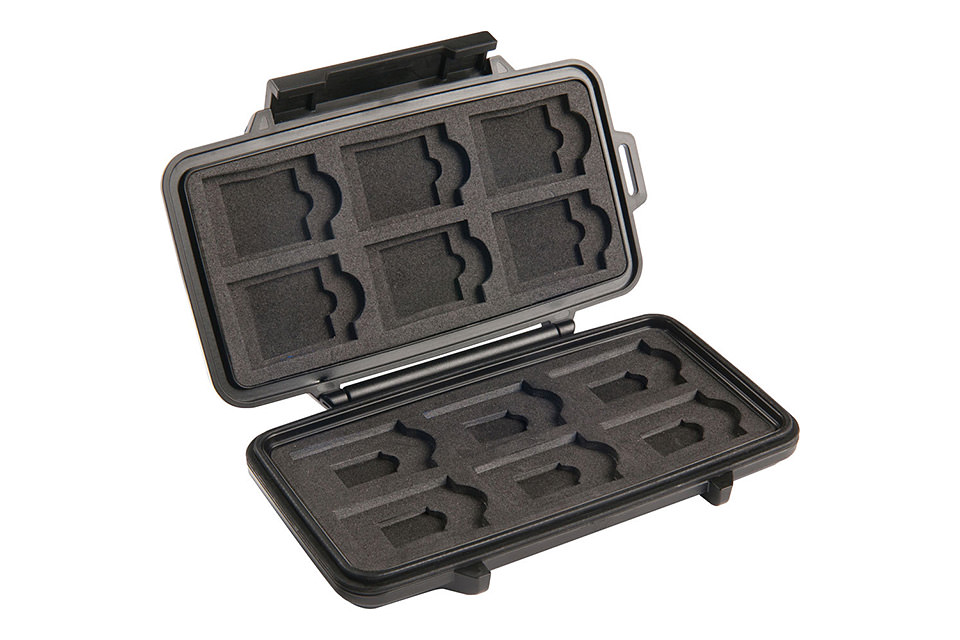
My preferred way to keep my memory cards safe from damage is to always keep them in a protected case. I have been using the Pelican 0915 Memory Card Case for years now and I love it, because it has a water resistant seal when I close the card holder, which keeps my memory cards protected from potential water damage. For only $25, it is a cheap way to protect those valuable images!
13) Use Memory Cards as a Backup
When traveling, I always try to keep a backup of my images in at least two different locations. If all I have is a laptop with me, then the laptop becomes primary storage and the memory cards I have used become secondary storage. If I have a laptop and an external drive, then those two become primary and secondary, while my memory cards become tertiary storage. As soon as I fill up a memory card, I put it back into my memory card case backwards, as shown in the below image:
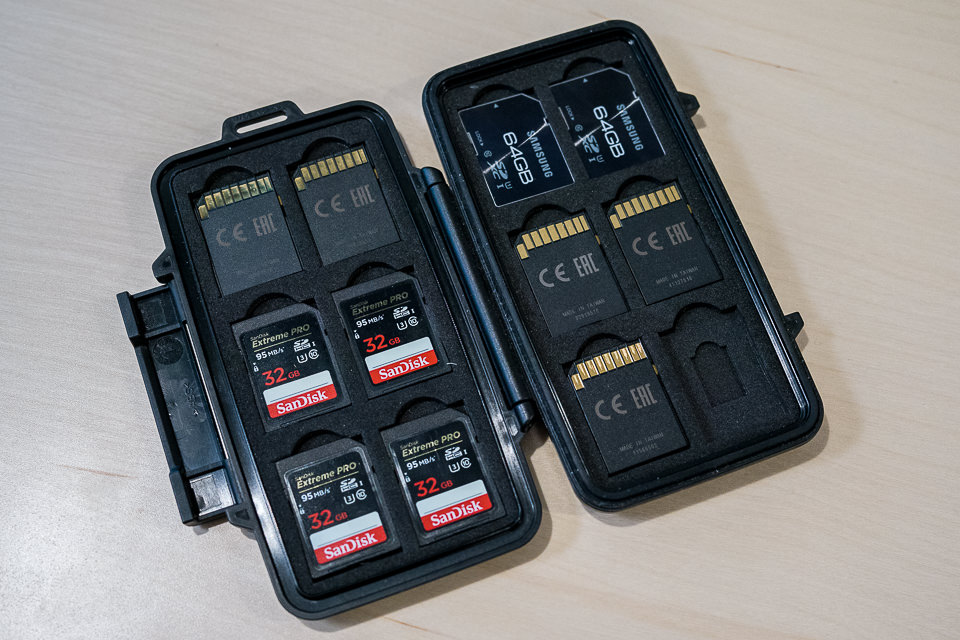
This way, I know exactly which memory cards have been used and which ones remain for me to use. I never format used cards until I get home and safely transfer everything to my main storage. I can only remember one case when I shot so much that I ran out of cards on a three week-long trip and only after making sure that both my laptop and my external drive contained all the images, I finally formatted the largest capacity memory card to use on that trip. Since then, I bought a few more cards, so that I don’t run into this issue again.
14) The Myth of Leaving Space on Memory Card
Some people argue that a memory card should never be filled completely, that doing so will either make it slower or increase the potential of memory card failure. This is a big myth from people who don’t know what they are talking about. First of all, I have never seen a case of a memory card filling up to the level where there is zero space left. When shooting images, if the camera sees that an image will not be able to fully fit on a memory card, it simply stops shooting and shows a “full” note. So the chances of fully taking up space on a memory card are very slim. Second, memory cards don’t work like other types of storage that might slow down when there is little space left. Third, filling up a memory card does not increase chances of its failure. I have been shooting with digital cameras for over 10 years now and I never had to worry about stopping shooting when the number of frames left is low. I always shoot until my cameras tell me that the memory card is full. Even when shooting video, I have managed to fill up cards and yet I have never seen a card fail as a result.
15) The Myth of Deleting Images from Memory Cards
Another myth is that deleting images from your camera can cause problems with corruption and potential memory card failure. Again, I am not sure where such claims come from, but they have no scientific backing to them. There is no harm in deleting images from your camera, just like there is no harm in deleting images on your computer. I have been doing this for years and I have never seen a card fail because of it! If I shoot a blurry or a badly exposed image, I get rid of it as soon as I see it on the LCD. Why go through the hassle of culling and potentially importing unwanted images? There is no reason at all – feel free to delete images on your camera or on your computer and stop worrying about any potential harm.
The only case where you might want to avoid deleting images is when you have two memory cards setup in overflow mode. As I have pointed out earlier, your camera will place images in the first memory card that has available space, so if you keep on deleting images from one card after the camera already started putting images on another, you might create a mess. Also, if you do decide to delete images from your camera, make sure that you take your time and only delete what you need – some cameras are designed to continue asking if you want to delete images and if you are not careful, you might also accidentally delete previous images.
16) Replace Memory Cards Every Few Years
Some of us stash memory cards in large sizes, thinking that we could use them forever. With any storage type, it is not about the question of “if”, it is the question of “when”. Memory cards fail and the more you use them, the more likely they are to fail at some point of time. So make it a good practice to replace memory cards every so often. Maybe every 3-4 years, maybe sooner or later, depending on how often you shoot. Also, keep in mind that newer memory cards are most likely going to be much faster and potentially even more reliable compared to the really old memory cards – just make sure to check their specifications before buying them. You do not want to use a newer generation memory card that might have compatibility issues with your older camera, or your memory card reader.